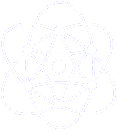About Maxscape.com
Maxscape.com is dedicated to the Maxscape web server framework. An introduction to Maxscape
is presented and information about web application server and content management systems
are published since 1998.
About Maxscape
Maxscape is a web server framework that provides the key features to develop,
manage and operate sophisticated web sites and services. Various programs,
components and modules are integrated to implement the generic features of an
application server, a content management system and a development and
integration environment.
-
 What is special about Maxscape? What is special about Maxscape?
-
With Maxscape content and Perl code can consistently be stored in a
rational database. The concept of storing content and (embedded) application code
in a database has some significant advantages compared to a file system approach.
The Maxscape data model maps a website's structure to a content tree consisting of nodes
of type Category, Page, Template, Link or Script. A node is addressed to by its
path which is defined by its category and node name. Each node has properties and
may contain node elements. Category elements can be inherited to sub trees and node elements
arbitrarily be imported.
The database elements contain most of a website's content. Database elements, similar to
HTML tags, consists of a name, attributes, content, language, etc. Because the Perl
interpreter allows to embed object member function calls within strings
and can execute code stored in a database, the Perl interpreter itself is used for server
and application programming.
Within the runtime system's main loops, nodes of the tree are fetched from the application
server databases and the associated callbacks are executed to generate the website,
on the fly. The runtime system provides several objects to be used within applications via the
Maxscape Server API, such as the WebServer, CGI, Context, Page, Form, Table, etc. classes.
-
 Development and Integration Environment Development and Integration Environment
-
The development environment, the integration chain and the distribution build consists of
a collection of programs, scripts, tools and the browser surfaces to manage the
file system and the database.
 Generic Web Server Platform Generic Web Server Platform-
The web server platform comprises a precompiled Apache server, a specially
compiled Perl interpreter with many useful CPAN modules, as well as a preconfigured
Mysql database.
The Apache is compiled with Fast-CGI, Mod-Perl and Openssl. Instead of the Apache,
Maxdaemon
can be used, but which is not part of the platform distribution.
The Perl Interpreter is specially build to the needs of its use with Maxscape,
for example to encrypt the sources on a production system. A reasonable subset
of CPAN packages is preinstalled.
Any relational database can be used for the content database as long as a
DBD/DBI driver exists for it. Anyway, a preconfigured MySql database is part of
the platform distribution.
 Application Server Run Time System Application Server Run Time System-
The run time system comprises the Maxscape start/stop script, the HTTP server,
the database and the (Fast-)CGI application daemons of the configured Applications
Servers.
The term Application Server denotes all parts, required to generate the
content of a special website. This is essentially the main script, the HTTP
server and Maxscape configuration, the CGI interface, the database instance,
the page generation objects, as well as the design, content and code belonging
to the application server's website.
An application process consists of a main script that implements the daemon's main loop
and includes the required packages and modules to generate the response to a request
from the applications server's database instance.
The main script and the included packages define several objects, functions and
variables by default to access the Application Server's configuration, the client
requests with their CGI environments, the content generation functions and the objects
to work with the database. At many stages of the content generation loop, applicationen
callbacks can be defined and inserted.
The most notable runtime objects are the $WebServer, $Process, $CGI, $Context, $Page, $Database,
$DatabaseTable, $PageTree and the $Filesystem objects.
Because the evaluation or execution of code contained in the database elements takes
place within the context of the $Page object, these objects can be accessed directly
by their names. The content of a database element can be, for example, of type plain text,
HTML, CSS, Javascript, Maxscript, Perl code and HTML with embedded Perl code.
 Maxscape WebServer Library Maxscape WebServer Library-
The generic Web Server library implements the functionality, that is more or less common to all websites.
The library offers an object oriented, hierarchical view on the website's data and
code stored in the application server's database instance and the media content stored
on the file system. Details, like SQL queries, are hidden to applications by the use of
the runtime objects Web Server API.
 Content Database and Data Model Content Database and Data Model-
The data model depicts the hierarchical structure of a website to a rational database.
Mapping a hierarchical tree to a rational database requires at least three database
tables to store the node's path, its properties and attributes, as well as its content
and code.
 Database and File System Surfaces Database and File System Surfaces-
Maxscape provides several web browser surfaces to manage the Content Database and
the file system of the configured application servers.
 History and Customers History and Customers-
The origin of Maxscape goes back to the year 1992. The possibilities of the upcoming Internet inspired
the development of web server framework.
In 1997, Maxscape was the first platform integrating an HTTP daemon, a database, a Perl interpreter with CPAN
packages, the Maxscape web server library and the application server runtime system.
Consequently, at that time, it was easy to sell Maxscape to customers like Phase 4, Vereinsbank,
T-Data, GHM, etc.
In the year 1999 it was decided to quit all customer relations because of
several reasons, such as to concentrate on the webserver's development itself, soleyly.
Well, Maxscape is maintained and developed till today, just for fun.
 Website Examples Website Examples-
Come To Know Maxscape
 To get a first impression of how Maxscape works, you might want to create a free account. You
can learn how to design and publish your own pages and you can join the project, if you like.
To get a first impression of how Maxscape works, you might want to create a free account. You
can learn how to design and publish your own pages and you can join the project, if you like.
Don't worry be happy, Max.
|
|

 What is special about Maxscape?
What is special about Maxscape?